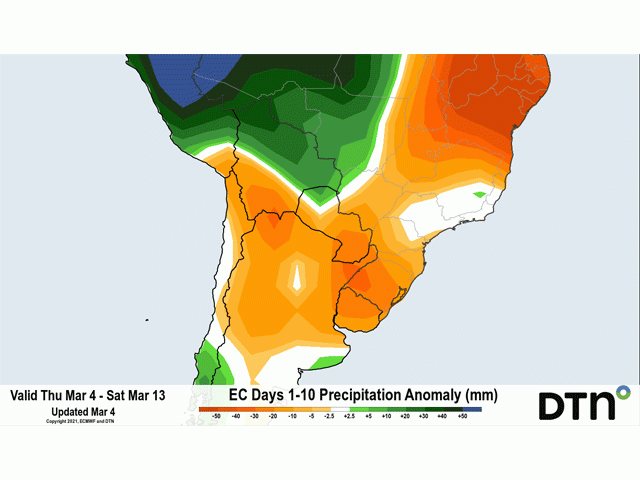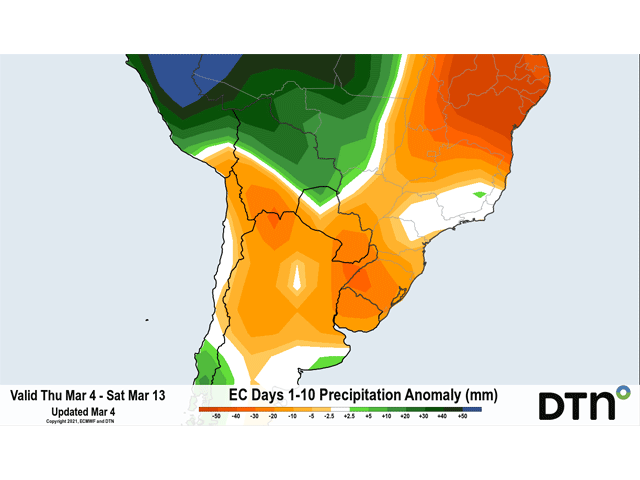South America Calling
Drier Week Ahead in South America
The difference between total soybean harvest and normal stands around 20% behind the normal pace through Feb. 26, according to Patria Agronegocios. However, the difference has neither widened nor has it closed during the last week. This means that producers are still able to get to their normal activities, it just happens to be around two to three weeks behind normal. This should be no surprise given the two-week delay in the start of the rainy season in the spring.
Showers have been rather consistent from Mato Grosso to Minas Gerais during the last two weeks, with near- to above-normal rainfall amounts and nearly daily showers in the region. Producers have been finding a way to get into the fields, however, as Mato Grosso has already harvested over half of their soybeans, according to the same Patria Agronegocios report.
Showers have been more in-and-out of the southern growing regions, though producers are still lagging behind soybean harvesting. The back-and-forth between wet and dry periods has led to some below-normal soil moisture from Mato Grosso do Sul to Sao Paulo and points southward in the country, however, and this could have a negative impact on the safrinha (second-season) corn season that is now underway.
P[L1] D[0x0] M[300x250] OOP[F] ADUNIT[] T[]
The wetness farther north has been much more beneficial. Soil moisture during the course of the main growing season had been near to below normal for almost the entirety of the season. However, the more persistent showers as of late have been able to fill up the soil profile and this will be very important going forward.
With the delay in the safrinha corn planting this year, crops are going to run the risk of being in the reproductive to filling stages of growth during the onset of the dry season, which begins in May. The later producers are forced to plant the corn, the greater the risk to yields.
During the next 10 days, scattered showers will continue to be more in-and-out of southern growing areas and persistent in the central and northern growing areas. However, the showers look to turn more isolated next week as a front moves into the region, leading to below-normal precipitation. This should help producers find more persistent windows for soybean harvest and safrinha corn planting while continuing to maintain favorable soil moisture.
South in Argentina, crops continue to go through dryness and drought stress. Some isolated showers have popped up over the last several days, but they have been spotty and most areas have seen less than 0.50 inch. The dryness continues to put a damper on yield prospects out of the country and the forecast does not show any significant improvement. During the last 30 days, Argentina has seen an average of 50% or less of normal rainfall, though some pockets of higher rainfall do exist in the country.
During the next 10 days, rainfall continues to look limited. A couple of fronts are looking to move through the country, but shower chances are localized and mostly light according to models.
John Baranick can be reached at john.baranick@dtn.com
(c) Copyright 2021 DTN, LLC. All rights reserved.






Comments
To comment, please Log In or Join our Community .